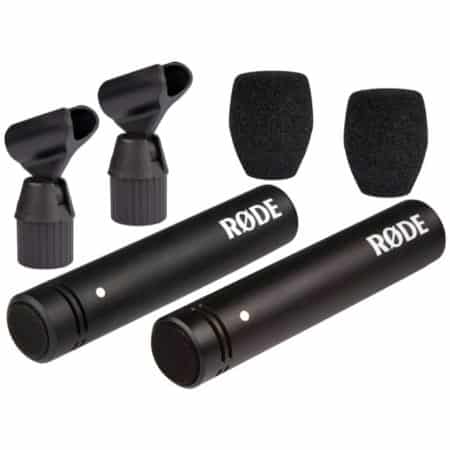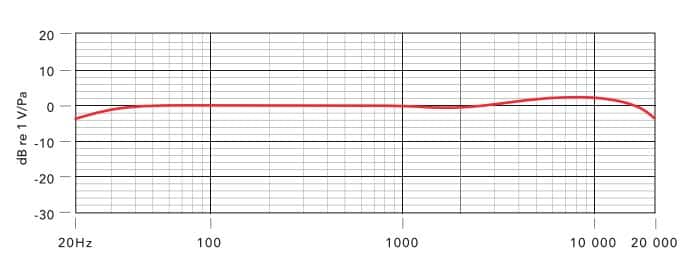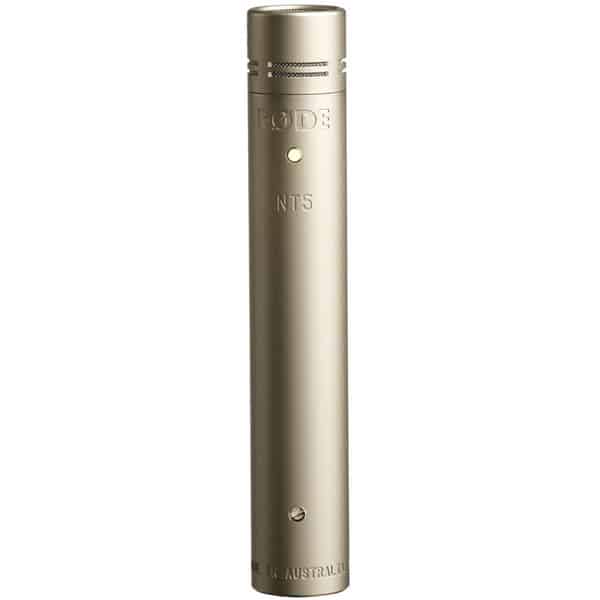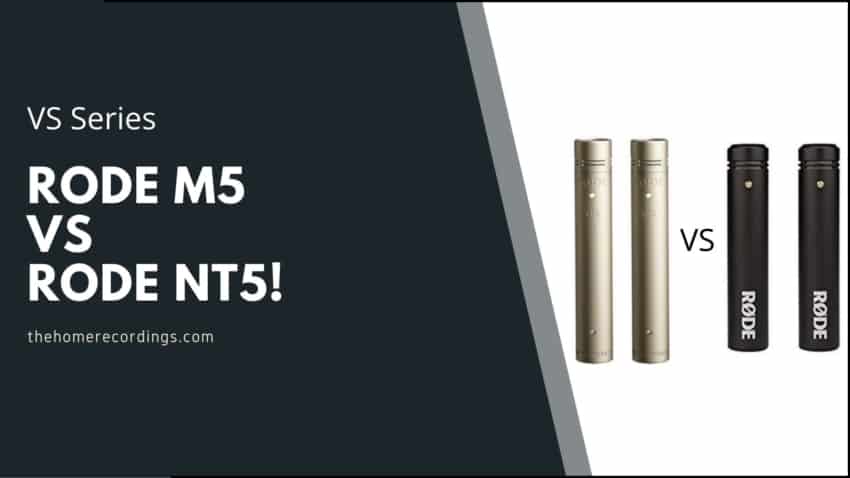Last updated on December 29th, 2023 at 09:56 pm
If you’ve ever even thought about getting a pair of small diaphragm condenser microphones, then you have surely read about both the Rode NT5 and the Rode M5, two of the best-know microphones that you will find in plenty high-end and home studios.
There are significant differences between the two, not just in price but also features and sound quality, and I will go over all of them in this article as well as give you my honest opinion on which one you should end up going with depending on your needs.
So, without any further ado, let’s get started!
Rode M5 vs Rode NT5: Differences
While both are small diaphragm condenser microphones, the Rode M5 comes with fixed non-removable capsules while the Rode NT5 lets you swap them out for omnidirectional ones. Soundwise, the NT5 has a more open and airy high-end while also having a more present low-end than the M5.
Now that the basic differences are out of the way, let’s get into the specifics, starting with the Rode M5.
Rode M5

The Rode M5 is a small diaphragm condenser pencil style microphone that features a compact and light design with a sleek and strong black-matte ceramic coating.
Contrary to some other small diaphragm condenser microphones out there, the M5 only sells as a matched pair, but two M5’s sells for almost the same amount as one NT5, so keep that in mind as we move forward.
The M5 comes with a WS5 pop filter and a RM5 stand mount, which should help you keep those pesky plosives at bay.

It captures a full frequency response range of 20Hz to 20kHz using a cardioid pickup pattern and it features a small boost in the 7kHz-16kHz range and it slightly pulls back around 20Hz-40Hz and around 18kHz.
Just like the NT5, the M5 absolutely requires +48v of phantom power to work. However, where these mics differ is that the M5 doesn’t come with interchangeable capsules, which means that not only won’t you be able to record using an omnidirectional polar pattern like you would with the NT5, but if the original capsules happen to get damaged, you can’t replace them and buying a whole new set of M5’s will be required.
Lastly, the Rode M5 doesn’t come with a PAD or a High-Pass filter.
How does it sound?
The Rode M5 pair excels in the mid and high frequencies in my opinion, since it doesn’t sound shrill or add any harshness or crispiness to the sound while still sounding open and airy, which is why it works great with guitars, percussion (especially overheads), strings, woodwinds, brass, pianos, and other similar instruments, as well as choirs.
However, one thing to note is that the M5, at least when compared to the Rode NT5, lacks a bit of presence in the bottom end which might leave the recording sounding a bit too thin.
Of course, this depends on the situation and what the mix requires, since you usually will remove some of that low end regardless when mixing loads of different tracks.
Small diaphragm condensers are known for having a very flat frequency response, which means that they take a pretty accurate snapshot of your sound without adding too much low-, mid-, or high-end.
As far as recording singing/talking goes, I have to say that I generally prefer large condensers for this specific job, however, the M5 does capture singing extremely well!
Note: There will be a comparison video of both microphones at the end of the post.
What comes in the Box?
- You get the two Rode M5’s
- Windscreens
- Mic stand mounts
Specifications
| Microphone Type | Small diaphragm condenser |
| Polar Pattern | Cardioid |
| Frequency Response | 20Hz – 20kHz |
| Output Impedance | 200Ω |
| Maximum SPL | 140dBSPL |
| Sensitivity | -34dB |
| Self-Noise | 19dB |
Find out more about the Rode M5 here:
- Rode M5: Amazon, Sweetwater.
Rode NT5

The NT5 was released by Australia’s Rode back in 2002 and has sprung from down under to pop up in project studios everywhere ever since. This microphone is commonly sold as a matched pair for stereo recordings but is also available as a lone ranger for those who aren’t in need of a duo.
It’s mainly designed for acoustic instruments and overheads, but a lot of low-budget filmmakers have taken a shine to using it as an indoor boom mic.
The NT5 is a small diaphragm condenser pencil style microphone. It’s compact and light with a sleek and strong satin-nickel plated body. This microphone requires 48V phantom power to operate and does not feature an internal battery option. It also does not include any hidden pads, filters, or switches of any kind, what you see is what you get!
It contains a gold sputtered diaphragm which captures a full frequency response range of 20Hz to 20kHz using a cardioid pickup pattern. The capsule can be removed and replaced with Rode’s separately sold NT45-O omnidirectional capsule.
Inside the NT5 you will find surface mounted circuit components which include a J-FET impedance convertor doing a little alternating current abracadabra.
How does it sound?
Rode’s NT5 holds its own in with other small diaphragms out there and can capture a warm picture, albeit lacking in detail compared to other pencil mics in the big league. This little RODENT’s nibble is versatile, it uses subtle nuances in its frequency response to paint a low-key but reliable picture.
Its response slightly pulls back around 20Hz-100Hz to offer up a restrained but cozy and charming low end.

The NT5’s lower-mids have a mild controlled bounce from 100Hz to 200Hz, then from 400Hz to 1kHz a nice little sweet spot of neutrality arrives. Further up again, its upper-mids have a somewhat hollow and punitive reaction.
This microphone’s high frequency response is its standout zone, it really adds some gleam and glisten to your scream and listen.
Rode’s NT5 sounds really poised on an acoustic guitar, but with a slight longing for a little more meat on its bone up in the upper-mids. There are no over-the-top frequency exaggerations, just a moderate resolution snapshot of your strumming.
As an overhead it adds the perfect pinch of brightness to the cymbals, making them really sing and sizzle.
Dialogue recorded through the NT5 has a nice subtle crispiness to it that would suit many a voice-acting vagabond.
Singing wise you will find this adequately agile, but it could use a tad more warmth on offer from the lows and bite from the upper-mids.
What comes in the box?
- Rode NT5 microphone
- WS5 windshield
- RM5 stand adapter
- ZP1 microphone carry pouch
- Hard case when purchased as matched pair
- 10-year warranty card
Specifications
| Microphone Type | Small diaphragm condenser |
| Polar Pattern | Cardioid |
| Frequency Response | 20Hz – 20kHz |
| Output Impedance | 100Ω |
| Maximum SPL | 143dBSPL |
| Sensitivity | 6 mV/Pa |
| Self-Noise | 16dBa |
Find out more about the Rode NT5 here:
- Rode NT5: Amazon, Sweetwater.
Which one should you choose?
Without taking cost into account, the NT5 definitely wins this one: The difference in sound quality is noticeable (although not too much), and the fact that the NT5 gives you the option of switching from a cardioid to an omnidirectional polar pattern just adds to the overall versatility.
The high-end of the NT5 just sounds fantastic, and recording acoustic guitars with it is just a blast, especially if you get two and use them as a stereo pair.
However, there’s a reason the M5 exists, and it’s because of cost efficiency: The Rode M5 costs half as much as the Rode NT5… even less, in fact, and this can’t be ignored.
Even though the Rode M5 doesn’t feature interchangeable capsules, which means that it’s an overall less versatile microphone, I think that it’s a better value.
For most people reading this, I think that the Rode M5 just makes a lot more sense, especially if your budget is somewhat tight, which is why I’d recommend it over the NT5… for MOST people.
If money is absolutely not an issue then yes, go with the Rode NT5 and be done with it, since you’ll never, EVER, have to upgrade your stereo pair microphones again.
Conclusion
When price is taken into account, the Rode M5 wins this battle, especially considering that the difference in audio quality, while noticeable, isn’t anything to write home about.
If you’re just getting started in your music production journey and you don’t have $500 to spend on a set of small diaphragm condenser microphones, then go with the Rode M5.
If, however, money is no issue at all, then the Rode NT5 are just the superior choice.
I hope this information was useful!
Have a great day!

Great review!
Thanks for the awesome description. 🙏🏻